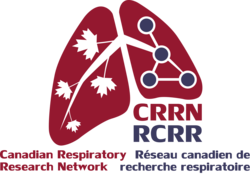2015 CRRN Studentship Recipient
Supervisor: Dr. Christopher Carlsten
Institution: University of British Columbia
Website: www.pollutionlab.com
Twitter: @MH_Ryu
LinkedIn: https://www.linkedin.com/in/mhryu
Biomarkers of diesel exhaust toxicity in the COPD Originates in Polluted Air (COPA) Study
Chronic exposure to traffic-related air pollution is linked to a higher chance of developing chronic lung diseases, such as asthma and COPD. Carefully evaluating how people are affected by pollution from diesel engine emissions may provide a more objective way to measure the risk of air pollution exposure. Through our study, we want to understand how individuals with susceptibility to chronic lung diseases are affected by traffic-related air pollution. We aim to find a molecule that humans secrete that can be used in clinics and laboratories to measure the degree of one’s exposure to traffic-related air pollution. To achieve this goal, we will investigate what changes occur in human secretions from the lung when people are exposed to diesel exhaust. In parallel, we will also investigate how the cells and tissues that make up our airways are affected by exposure to diesel exhaust.
Why is the research project/program important?
Biologically plausible and quantifiable indicators of impact from air pollution are necessary to provide convincing evidence that can inform decision makers and stakeholders in creating beneficial policies. Regulatory decisions require a foundation built by toxicology, epidemiology and controlled human exposure studies. Our society increasingly demands to understand how toxic substances in air pollution impact complex human biology, disease susceptibility, and progression. Recently, studies have suggested a link between air pollution exposure and the origin of chronic obstructive pulmonary disease (COPD). Considering that COPD is one of the leading causes of hospitalization and death in Canada with an estimated 4% of population living with the disease, the need to examine the environmental links is inevitable.
What was the result of the project and what impact will it have?
Our research aim is to find a simple, clinically relevant strategy for doctors to measure how much impact traffic-related air pollution has on a patient’s lung health. For healthy people and those at risk of developing chronic lung diseases, our research will provide insight into how traffic-related air pollution may impact their lungs and increase their likelihood of developing chronic lung diseases. This knowledge will empower people to better manage their health risks. For those who already have a mild form of chronic lung diseases, our research may motivate patients and their doctors to keep track of air pollution exposure levels and aid in reducing overall exposure over time.

